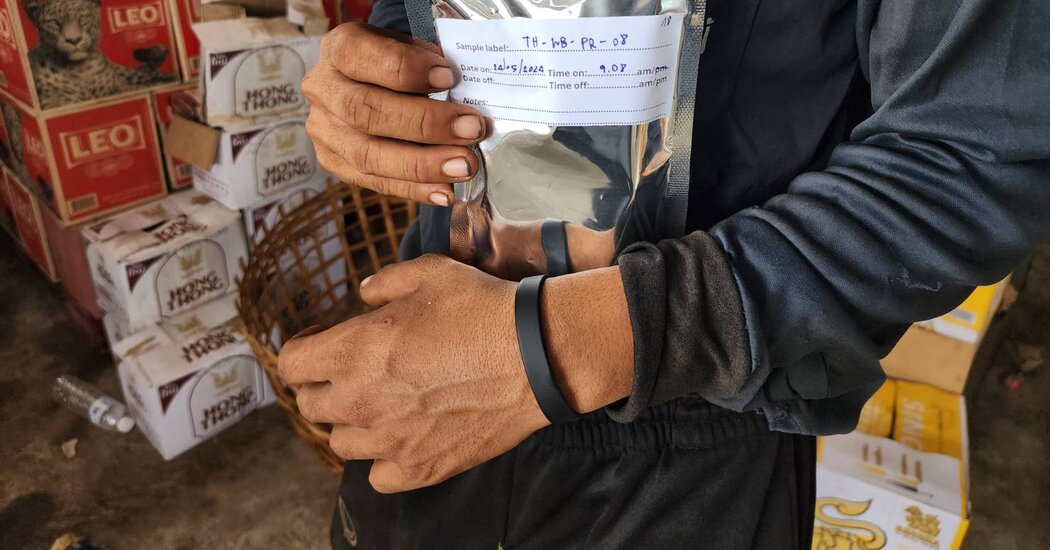As international talks continue this week, a dozen U.N. officials reveal scientists tracked their exposure to many chemicals found in plastics.
The wristbands look like those you might find at a souvenir shop: bendy loops of silicone, in the color of your choice. But scientists are increasingly using the bands to measure exposure to toxic chemicals present in the air around us and in everyday items we use, including personal care products.
Silicone mimics the way the human body absorbs harmfulchemicals and has little pores similar in size to pores in human cells. Having people wear the wristbands, and then studying the chemicals the bands absorb, can give scientists a good understanding of the chemicals the wearers were exposed to.
As negotiations continued this week in South Korea on a global treaty to tackle plastic pollution — including restricting the harmful chemicals present in plastic — 12 high-ranking United Nations officials had worn the wristbands to measure their exposure to toxic chemicals.
The unusual experiment that included the U.N. High Commissioner for Human Rights, Volker Türk, took place for five days earlier this year. It was organized by the International Pollutants Elimination Network, or IPEN, a global network of nonprofit groups advocating for stronger chemicals regulation.
The project focused on globally unregulated chemicals found in plastic and plastic manufacturing that are thought to be harmful to health.
The results, which showed the U.N. officials had each been exposed to more than 30 different chemicals, were released on Thursday. It was meant to be illustrative, the group said, to drive home the fact that the treaty negotiators themselves are vulnerable to chemicals that could have health effects.
